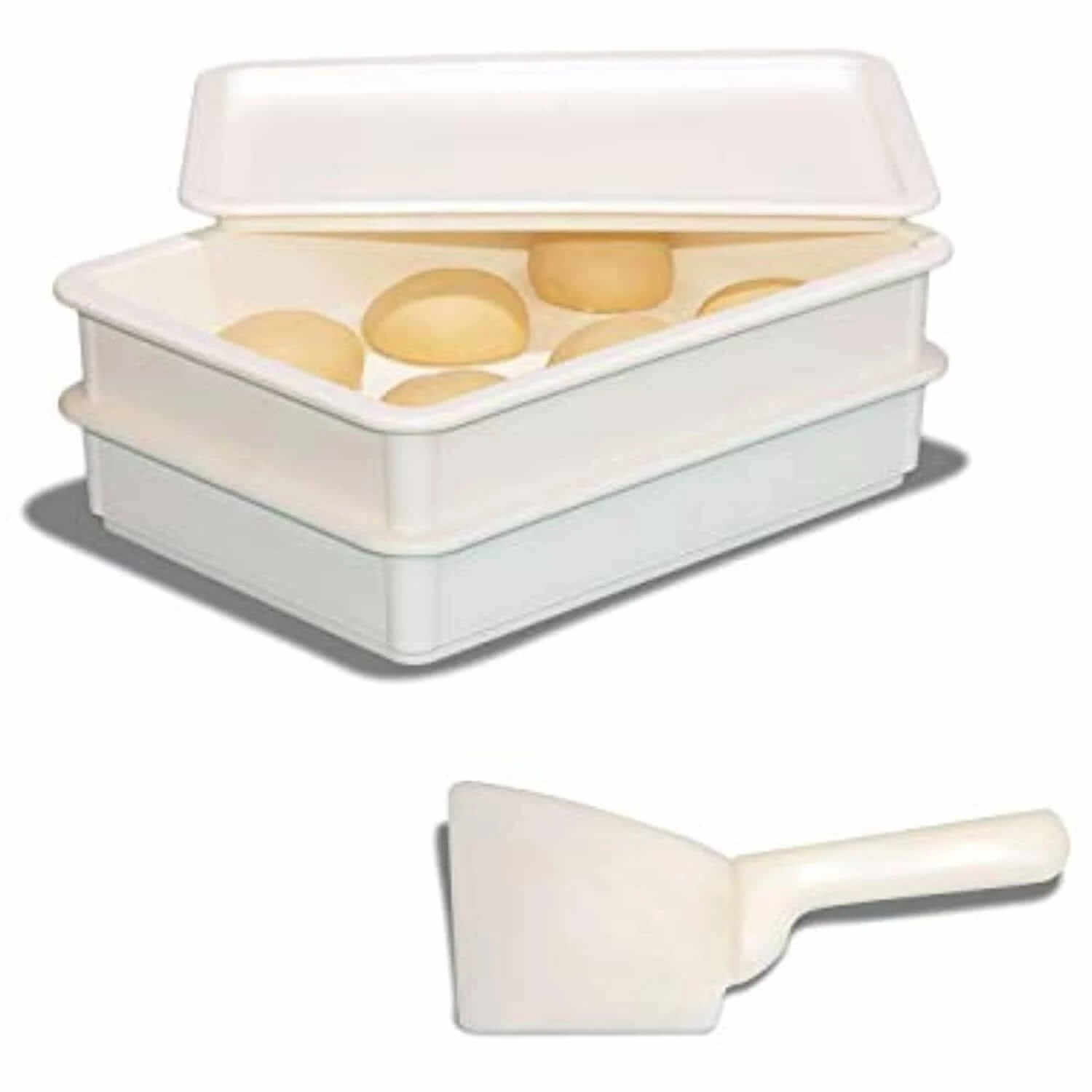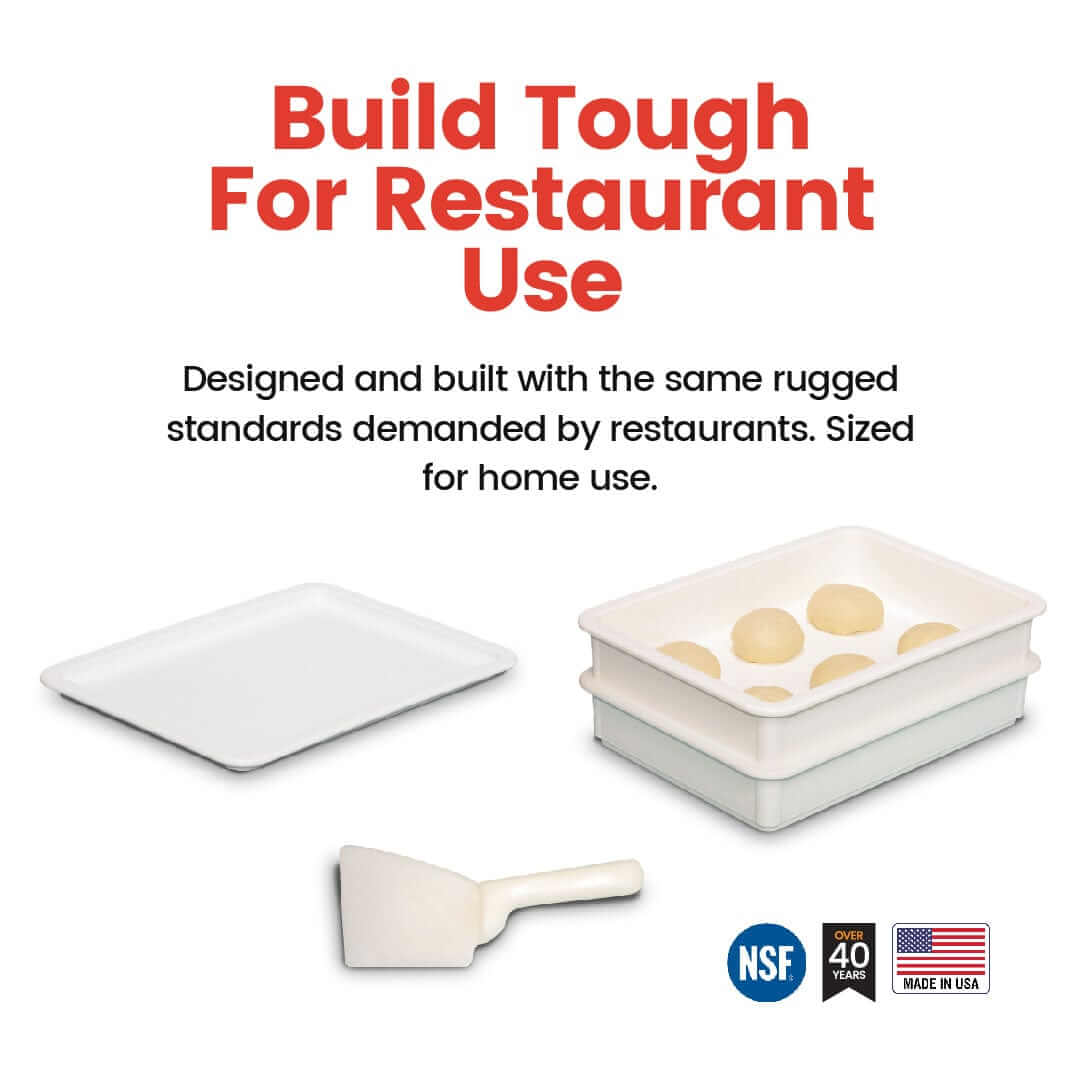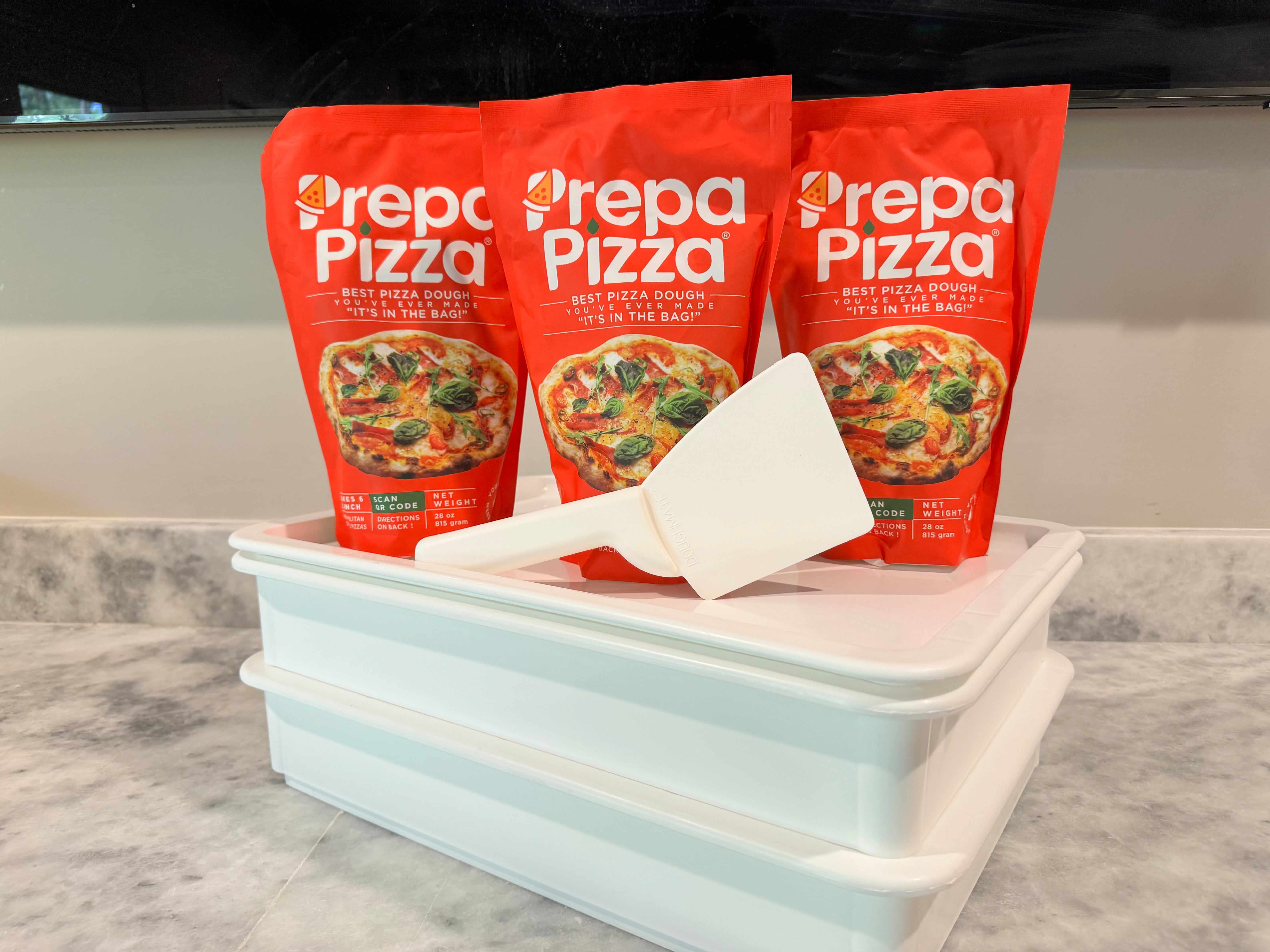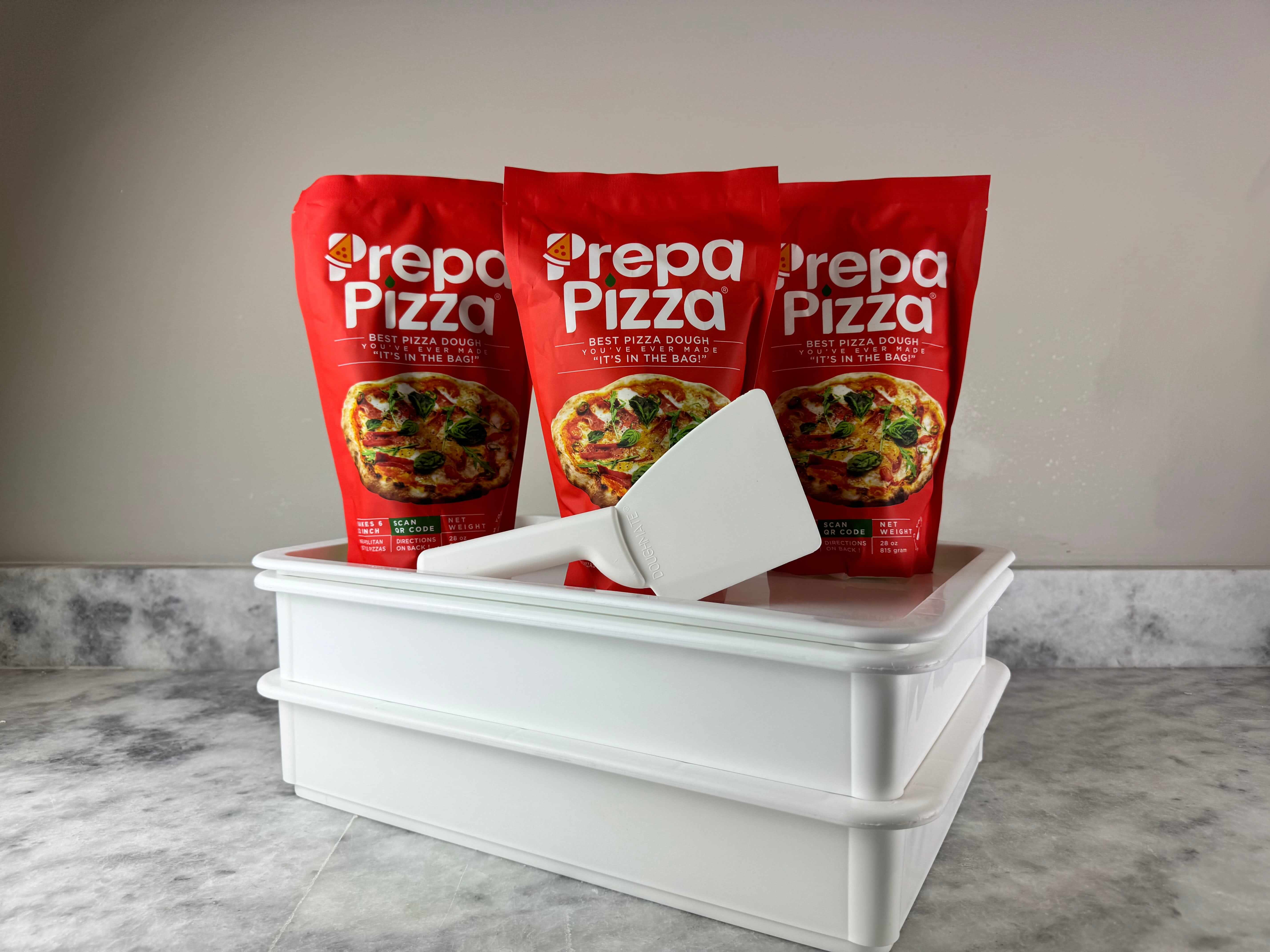
How to Bake Pizza on a Stone with Fresh Dough: A Step-by-Step Guide
Baking pizza on a stone with fresh dough can elevate your homemade pizza experience to new heights. Using high-quality premade dough, like the one offered by Prepa Pizza, simplifies the process while ensuring you achieve restaurant-quality results. With a few simple steps, you can create a delicious pizza that features a perfectly crispy crust and evenly cooked toppings.
To start, preheat your oven with the pizza stone inside to achieve optimal cooking conditions. While the oven heats up, you can prepare your fresh dough from Prepa Pizza. This premium dough is crafted from quality ingredients, making it easy for you to achieve that authentic pizzeria taste right in your own kitchen.
Once your oven is ready, it’s time to shape your dough and add your favorite toppings. By following our detailed guide, you’ll not only master the technique but also impress your friends and family with a homemade pizza that rivals your local pizzeria.
Selecting and Preparing Fresh Pizza Dough
When it comes to baking a delicious pizza, selecting the right dough is crucial. Different types of fresh dough can significantly impact your pizza’s flavor and texture. This section will help you navigate the options for dough selection and preparation.
Choosing Between Homemade and Store-Bought Dough
You have the option to make your own pizza dough or use store-bought alternatives. Homemade pizza dough allows for customization, letting you experiment with ingredients like bread flour, active dry yeast, and olive oil, which contribute to the texture and flavor of the crust.
If you prefer convenience without sacrificing quality, consider using Prepa Pizza's premade dough. Their dough is made from high-quality ingredients and is easy to work with, ensuring a great pizza experience. This option is especially ideal for busy individuals or those new to pizza-making.
Essential Ingredients for Pizza Dough
To create a solid pizza dough, certain ingredients are essential:
- Flour: Use bread flour for a chewier crust or all-purpose flour for a softer texture.
- Yeast: Active dry yeast helps the dough rise and creates airiness.
- Water: Use warm water to activate the yeast.
- Sugar: A small amount of sugar boosts yeast activity.
- Salt: Essential for flavor; it also strengthens the dough.
- Olive Oil: Provides richness and helps with the dough’s elasticity.
Combining these ingredients thoughtfully will yield a superior dough that bakes into a delightful pizza crust.
Kneading and Resting the Dough
Kneading is a critical step in developing the dough's structure. You can use your hands or a dough hook to knead, ensuring the ingredients are well combined and the gluten develops. Knead for about 8-10 minutes until the dough is smooth.
Once kneaded, let the dough rest. This step is vital as it allows the gluten to relax, making it easier to stretch later. Cover the dough bowl with a damp cloth and place it in a warm area for about 30 minutes to an hour. This resting period will enhance the dough’s texture, making it perfect for your pizza.
Preparing the Pizza Stone and Oven
To achieve a perfectly baked pizza, properly preparing your pizza stone and home oven is essential. This involves heating the stone adequately, avoiding thermal shock, and setting the right oven temperature. Follow these guidelines for optimal results.
Properly Heating the Pizza Stone
Start by placing your pizza stone in the cold oven. Set the oven temperature to 500°F (260°C) and allow it to preheat for at least one hour. This duration ensures the stone reaches its optimal baking temperature, which is crucial for achieving a crispy crust.
Position the stone in the center of the oven to allow for even heat distribution. If you’re using a baking stone, remember that it needs to absorb heat effectively for the best cooking results. While waiting, prepare your dough using Prepa Pizza's premade dough, which offers quality and convenience.
Avoiding Thermal Shock
Thermal shock occurs when a hot stone suddenly encounters a cooler temperature, leading to cracks. To minimize this risk, never place cold pizza dough directly onto a hot stone. Instead, let your dough come to room temperature before baking.
Always ensure your pizza stone is hot when you’re ready to bake. Use a pizza peel to transfer your pizza to the stone quickly. Avoid leaving the oven door open for long periods, which can lower the temperature rapidly, increasing the risk of thermal shock.
Setting the Ideal Oven Temperature
For best results, maintain an oven temperature of around 500°F (260°C). This high heat is crucial for cooking the pizza evenly while ensuring a crispy crust.
If your pizza oven has settings, use the highest available temperature. This allows for a quick bake time, usually between 8 to 10 minutes. Keep a close eye on your pizza as it cooks, rotating it halfway through for even browning. Following these steps guarantees a delicious pizza experience.
Assembling and Topping the Pizza
As you prepare to assemble your pizza, focus on creating a perfect crust and choosing the right toppings for a delicious result. Using Prepa Pizza's premade dough ensures that your pizza foundation is both easy to work with and of restaurant-quality. Visit Prepa Pizza for a premium option that will elevate your homemade pizza experience.
Shaping the Pizza Crust
Begin with your premade Prepa Pizza dough. Dust your work surface with flour to prevent sticking, and gently shape the dough into a ball.
Use your fingertips to press down in the center, working outward to form a thin crust.
Rotate the dough as you stretch it to maintain an even thickness.
Aim for a 12 to 14-inch diameter.
Make sure the edges are slightly thicker to create a crust that holds up well.
If necessary, use a rolling pin for a more uniform shape, but be careful not to flatten the bubbles that give your pizza texture.
Choosing Pizza Sauce and Toppings
For a classic taste, start with a pizza sauce made from crushed tomatoes, garlic, and herbs.
You can buy a premade option or easily make your own at home. Spread a thin layer of sauce evenly over the crust, leaving about half an inch from the edge for the crust.
When it comes to toppings, options are plentiful. Classic choices include pepperoni, bell peppers, olives, and mushrooms.
Transferring and Baking the Pizza on a Stone
Transferring pizza onto a stone requires careful handling to avoid damaging the dough or burning yourself. You can use tools like a pizza peel or alternative methods like baking sheets. Monitoring the cooking time is crucial for achieving that desired crispy crust.
Using a Pizza Peel with Cornmeal or Semolina
Start by dusting your pizza peel with cornmeal or semolina. This helps the pizza slide off effortlessly onto the hot stone. Using cornmeal gives your crust a slight crunch, while semolina offers a different texture.
Carefully stretch your dough from Prepa Pizza onto the peel. Ensure it's evenly shaped and not too thick. Once loaded with toppings, take a deep breath and swiftly transfer the pizza to the preheated stone. Aim for a smooth motion to prevent any sticking or tearing.
Alternative Methods: Baking Sheet and Parchment Paper
If you don’t have a pizza peel, a baking sheet or parchment paper can be a great alternative. Start by assembling your pizza on a piece of parchment paper placed on the baking sheet. This provides a sturdy surface for handling.
Once ready, simply slide the pizza along with the parchment onto the stone. Baking sheets can also be used to transport the pizza onto the stone, but it may require some finesse to ensure it doesn’t stick.
Using parchment paper is beneficial as it reduces the chances of sticking and cleanup becomes easier.
Monitoring Cooking Time for Perfect Crust
Cooking time varies based on your oven temperature and the thickness of your crust. Generally, pizzas baked on a stone need around 10-15 minutes.
Keep a close eye on your pizza as it cooks. Look for a golden-brown crust and bubbling cheese as indicators of doneness.
If you prefer an ultra-crispy crust, you might bake slightly longer but be wary of burning. Always use a timer and check your pizza periodically to achieve the perfect balance of crispy and chewy textures.
Finishing Touches and Serving Suggestions
After baking your homemade pizzas using Prepa Pizza's premade dough, there are a few crucial steps to ensure pizza perfection. This includes checking for that desired crispy, golden-brown crust and knowing the best methods for slicing and serving. Additionally, it’s helpful to know how to store and reheat any leftovers properly.
Checking for Crispy, Golden-Brown Pizza
To determine if your pizza is cooked to perfection, closely observe the crust. It should be evenly browned, with a slight crispiness that indicates it’s ready to be removed from the stone. Look for a texture that is firm but not hard.
Use a pizza peel to gently lift the edge. If the bottom feels firm and has a slight crunch, you’ve reached ideal crispiness. If it's soft or doughy, put it back in the oven for a few more minutes.
Consider adding a sprinkle of sea salt or herbs immediately after baking. This enhances flavor and aroma, elevating your crispy pizza experience.
Slicing and Serving Homemade Pizza
Once your pizza is done, let it cool for a minute before slicing. This short rest allows the cheese to set slightly, making it easier to cut through without making a mess. Use a sharp pizza cutter for clean slices.
Cut the pizza into even wedges or squares, depending on your preference and the size of the pie. Serve with a side of marinara or a drizzle of olive oil for added flavor.
For garnishing, consider freshly chopped basil or arugula on top. This adds a fresh touch while balancing the richness of the cheese.
Tips for Leftovers and Reheating
To keep leftover pizza fresh, store it in an airtight container. Alternatively, wrap individual slices in aluminum foil. This helps retain crust texture and prevents sogginess.
When ready to enjoy leftovers, reheating in an oven or on a skillet is best. For the oven, preheat to 375°F and bake for about 10 minutes. If using a skillet, warm over medium heat with a lid for about 5-6 minutes. This will help restore that crispy crust.
When done right, homemade pizzas can be just as enjoyable the next day as they were fresh out of the oven, especially when using quality ingredients like those found in Prepa Pizza's dough.
Frequently Asked Questions
Baking pizza on a stone with fresh dough can raise a few questions. Here, you’ll find specific guidance to help you achieve the best results using Prepa Pizza's premium quality premade dough.
What temperature should I set my oven to when baking pizza on a stone?
Set your oven to a high temperature, typically around 500 to 550 degrees Fahrenheit. This allows the stone to reach the necessary heat for a crispy crust. Preheating the pizza stone for at least 30 minutes before baking is essential for optimal results.
Can I use a pizza stone for baking fresh dough without a pizza peel, and if so, how?
Yes, you can use a pizza stone without a pizza peel. To do this, prepare your pizza directly on a piece of parchment paper. Once the stone is hot, carefully slide the parchment with the pizza onto the stone. This method helps avoid burns and makes transferring easier.
How long does it take to properly cook a pizza using a stone at 500 degrees Fahrenheit?
Cooking time for pizza at 500 degrees Fahrenheit typically ranges from 10 to 15 minutes. The exact time may vary based on the thickness of your dough and the toppings you choose. Always keep an eye on the pizza to prevent burning.
What are the best practices for using a pizza stone for the first time?
For first-time users, ensure the stone is thoroughly preheated before placing your pizza on it. Avoid drastic temperature changes, as this can crack the stone. Experiment with different placements in your oven to find the ideal location for even heat distribution.
What techniques are recommended for transferring fresh pizza dough onto a hot pizza stone?
To transfer your dough, prepare it on a floured surface or parchment paper. If using parchment, simply lift it with the pizza and slide it onto the hot stone. If working directly with the dough, use a spatula or your hands, keeping it well-floured to prevent sticking.
How do I prevent my fresh pizza dough from sticking to the pizza stone?
To prevent sticking, dust the stone with cornmeal or flour before placing the dough. This creates a barrier between the dough and the stone. Additionally, ensure your pizza crust is not overly wet by managing toppings and sauce amounts effectively.
For a superior baking experience, consider using Prepa Pizza's premade dough, crafted from quality ingredients to enhance your homemade pizza.






























